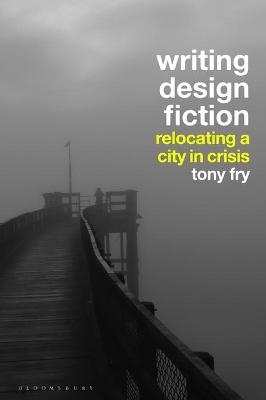
Writing Design Fiction
Bloomsbury Visual Arts (Verlag)
978-1-350-21730-0 (ISBN)
Set in the near future, Harshon, a delta city, is facing environmental catastrophe due to rising sea levels—consequently, a decision is made to relocate the entire city inland. A diverse cast of voices—including an architect, a journalist, an economist, a construction worker, and residents—narrate the extraordinary challenges and complexities which follow. This work presents a real-world scenario which, in coming decades, will face many of the world’s cities. The fictional format provides a novel way of exploring the very serious inherent technical, social, political, economic and cultural challenges. The story provides a rehearsal of the design challenges which are likely to face architects, planners, and designers in an uncertain global future.
“Design fiction” is a fast-growing area within design and architecture, increasingly deployed as a serious methodology by designers as a tool in scenario planning. Writing Design Fiction takes the practice to a higher level conceptually and theoretically, but also practically. The book is divided into four parts, with the fictional narrative bookended by further critical analysis. Part One shows how a critique of existing modes of design fiction can lead to more grounded and critical thinking and practice. Part Three critically reflects on the narrative, while Part Four presents the practical application of the second order design fiction approach. This book demonstrates the value of a more developed mode of design fiction to students, professional designers and architects across the breadth of design practices, as well as to other disciplines interested in the future of cities.
Tony Fry is Principal of The Studio at the Edge of the World, Adjunct Professor at the University of Tasmania, Australia and Visiting Professor at Universidad de Ibagué, Colombia. Tony has held academic positions in Australia and internationally and is the author of fourteen books, including Design Futuring (Bloomsbury, 2009); Design as Politics (Bloomsbury, 2011), Becoming Human By Design (Bloomsbury, 2012), Remaking Cities (Bloomsbury, 2017), and Unstaging War (2019).
THE CURTAIN RISES. The Opening of the Metanarrative
PART ONE: An Extended Prologue
PART TWO:The Story of Moving Urbana
1. The story of Port Urbana – Grace Ebu
2. The displaced and the move: Lena Arikan
3. Stasis and unsettlement – Kendrick Jensen
4. Age and life in the end times – Angela Leung
5. The world of health – Gerda Krauss
6. Localising the economic at the end of global capitalism: Gordon Chow
7. New thinking, new action – Carla Boas
8. Construction from the future to the present– Chris Glover
PART THREE: Reflection and Direction
PART FOUR: Design Fiction Applied
THE CURTAIN FALLS. The Closing of the Metanarrative
References
Index
| Erscheinungsdatum | 22.10.2021 |
|---|---|
| Zusatzinfo | 16 bw illus |
| Verlagsort | London |
| Sprache | englisch |
| Maße | 156 x 234 mm |
| Gewicht | 592 g |
| Themenwelt | Naturwissenschaften ► Biologie ► Ökologie / Naturschutz |
| Technik ► Architektur | |
| ISBN-10 | 1-350-21730-1 / 1350217301 |
| ISBN-13 | 978-1-350-21730-0 / 9781350217300 |
| Zustand | Neuware |
| Haben Sie eine Frage zum Produkt? |
aus dem Bereich


